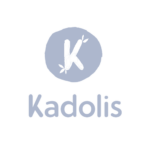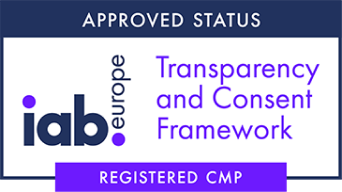Manage your budget and maximize the ROI of your digital advertising campaigns














affiliation platform for the Home & Fashion Made in France universe
of sales generated in 2023 for our advertisers
1 invested generates over €14 in sales
What is ROI and how do you calculate it?
Here’s the formula for calculating ROI:
Revenue generated – Campaign costs / Campaign costs
You can multiply this by 100 to get an accurate percentage of your return on investment. This will show you the effectiveness of each strategy and channel used, such as SEO, SEA, social networks, content marketing, etc.
Return on investment (ROI) enables you to assess the profitability of your digital advertising campaigns. This performance indicator measures the profitability of a marketing action. It consists in comparing the benefits generated with the expenses incurred.
To measure ROI, you must :
Define clear objectives for each campaign: generate leads, improve brand awareness, increase sales, etc.
Choose key performance indicators (KPIs). These could be cost per lead, conversion rate or return on advertising spend.
Use monitoring and analysis tools to assess performance.
Remember that the key performance indicators you analyze will depend on the objectives of your campaigns. Make sure you have SMART objectives to help you manage your business.
Measuring ROI and ROO: two complementary approaches
You can evaluate the profitability of marketing campaigns in two ways:
- Track and measure the number of leads generated that have converted into customers over a given period, and determine the value they have brought to the company.
- Use Return-On-Objective (ROO) when results cannot be directly linked to sales. This is based on other performance indicators, such as the number of MQLs (Marketing Qualified Leads), newsletter subscriptions, completed forms, awareness gains or increased traffic generated by an SEO campaign.
What KPIs should you track to calculate the results of your actions?
Generate leads or sales
Is the main objective of your digital campaign to generate leads or sales? Several KPIs can provide you with valuable information on the performance of your actions.
Conversion rate
This is the percentage of visitors who complete the desired action, whether it’s filling in a form or finalizing a purchase. The higher this rate, the more effective your campaign.
Cost per lead (CPL)
This indicator measures the effectiveness of your campaign in generating leads. It is calculated by dividing the total cost of the campaign by the total number of leads generated.
Cost per acquisition (CPA)
This determines how much it costs you, on average, to acquire a new customer. Dividing the total cost of the campaign by the total number of customers acquired enables you to assess the relevance of your acquisition strategy.
Customer Lifetime Value (LTV)
It measures the total revenue a customer can bring you during his or her lifetime as a customer. By comparing LTV with the cost of acquiring a customer, you can determine whether your campaigns are profitable in the long term.
Return on advertising investment (ROAS)
It’s one of the most important indicators for measuring the effectiveness of your advertising spend. To determine ROAS, divide the revenue generated by the campaign by the total cost of advertising expenditure. A high ROAS means that your advertising efforts are profitable.
Increase website traffic
Would you like to boost traffic to your website with online advertising campaigns? Various KPIs can help you evaluate the impact of your campaigns, such as :
Click-through rate (CTR)
This KPI measures the percentage of people who click on your ad in relation to the total number of impressions. A high CTR means that your ad is relevant and attracts the attention of your target audience.
Cost-per-click (CPC)
This shows how much you spend for each click on your ads. To calculate the CPC, divide the total cost of the campaign by the total number of clicks. A low CPC means you’re getting a good return on your advertising spend.
Bounce rate
The bounce rate measures the percentage of visitors who leave your site after viewing a single page. A high bounce rate may indicate a lack of relevance between your campaign and the content of your site.
Page views per visit
This KPI indicates how many pages a user views on average when visiting your online store. The higher the number of page views per visit, the more engaged your visitors appear to be with your content.
Average session length
This indicator measures the time visitors spend on your site. A longer session is often synonymous with attractive, relevant content for your audience.
Improve brand awareness and engagement on social networks
Social networks play an important role in increasing brand awareness and audience engagement. To measure the effectiveness of your campaigns on these platforms, here are a few KPIs to track:
- Reach, which measures the total number of people who have seen your content. Reach allows you to evaluate your brand’s visibility on social networks.
- Impressions measure how many times your content has been displayed. This KPI helps you understand how often your audience is exposed to your content.
- The engagement rate, which measures the proportion of people who interact with your content (likes, comments, shares) in relation to the total number of impressions or reach.
- The subscriber growth rate, which measures the increase in the number of your subscribers over a given period. Rapid growth can indicate a successful campaign.
How can you measure the ROI of a campaign in relation to your objectives?
To generate qualified leads
Do you want to accurately measure the ROI of your marketing campaigns aimed at generating Marketing Qualified Leads (MQLs)? There are a number of steps you need to follow to understand both the costs incurred and the benefits obtained.
Calculate all campaign costs
Start by calculating the total costs associated with the campaign. There are a number of elements to take into account, such as :
- Advertising expenses such as the cost of ads on Google Ads or Facebook.
- Agency fees if you have outsourced certain parts of the campaign.
- Content creation costs: visual design, copywriting, production of promotional videos.
- Tools and software used: these may include marketing automation tools, lead management tools or performance analysis platforms.
Determine the number of qualified leads generated
Once the costs have been calculated, you need to determine the number of qualified leads generated by the campaign. To analyze these results, you can use the lead tracking and management tools set up during the campaign. Segment your leads to distinguish between simple contacts and MQLs. An MQL has generally passed through several stages in the conversion tunnel. They have a high potential to become customers. This is a more reliable indicator of your campaign’s effectiveness.
Estimate the monetary value of qualified leads
The value of a qualified lead depends on two main factors:
- The lead-to-customer conversion rate: this indicates the proportion of qualified leads that turn into customers. For example, if 10% of your qualified leads become customers, this gives a conversion rate of 10%.
- Average customer value: this figure corresponds to the average revenue generated by a customer over a given period.
To determine the monetary value of a qualified lead, multiply the conversion rate by the average value of a customer. For example, your conversion rate is 10% and the average value of a customer is €500? Then each qualified lead is worth €50 (10% x €500).
Calculate campaign benefits
To find out the benefits generated by your campaign, multiply the number of qualified leads by their estimated monetary value. For example, your campaign generated 100 qualified leads and the value of each lead is €50? The total benefits of the campaign will be €5,000 (100 x €50).
Calculate ROI
Finally, you can calculate the ROI using the formula we indicated above: (Profits – Costs / Costs) x 100. For example, if the total costs of the campaign are €2,000 and the profits are €5,000, the ROI of the campaign will be 150%. An ROI of 150% means that for every euro invested, you generated 1.5 euros in profits. A positive ROI indicates that the campaign was profitable. A negative ROI means that costs exceeded profits.
To increase brand awareness
Knowing the ROI of a campaign designed to increase brand awareness can be more complex, as it’s a more abstract concept. Here’s how you can estimate the ROI of this type of campaign.
Define brand awareness objectives
Start by defining clear, measurable objectives. These objectives can include indicators such as :
- Increased website traffic
- Better engagement on social networks
- An increase in Google searches for the brand
- An increase in media mentions.
They will enable you to track the progress of brand awareness, even if they don’t immediately translate into sales.
Calculate the total cost of the campaign
Then evaluate the total cost of the campaign. Consider not only advertising expenditure, but also the costs associated with content creation, social network management tools and the fees of any collaborators or service providers involved. With an overview of all expenses, you can compare the results of the campaign with the investment made.
Measure KPIs for brand awareness
Commonly used KPIs include :
- Advertising prints
- Organic website traffic
- Interactions on social networks
- Brand searches on Google
- Media mentions.
This data enables you to assess whether your campaign is achieving its initial objectives.
Estimate the value of brand awareness
To quantify the impact of brand awareness, establish correlations between awareness and more concrete indicators such as sales, leads or conversions. For example, if an increase in brand awareness indirectly leads to additional sales, this can be an indicator of success.
Calculate ROI
To calculate ROI in this context, you need to divide the estimated value of brand awareness by the cost of the campaign. Then multiply by 100 to find the ROI percentage. For example, the campaign generated 10,000 euros in additional sales and the cost of the campaign was 5,000 euros? The ROI is therefore 200%.
To increase sales
To measure the ROI of a digital advertising campaign designed to boost sales, you need to follow a clear methodology. This must take into account the costs and revenues generated by the campaign. Here are the steps you need to follow to calculate ROI and optimize results.
Calculate total campaign costs
Here again, you need to account for all costs associated with the campaign. These may include advertising expenses, agency fees, content creation, etc. These expenses represent the investment you’ve made to implement and execute the campaign. These expenses represent the investment you’ve made to implement and execute the campaign.
Measure sales generated by the campaign
Then measure the sales you’ve made online thanks to the campaign. Don’t hesitate to use conversion tracking and analysis tools. You’ll know exactly how many sales were made during the campaign period. This will enable you to determine the direct impact of your marketing efforts on revenues.
Calculate campaign revenues
Measuring sales enables you to calculate the revenue generated. To do this, multiply the total number of sales by the average value of a sale. For example, your campaign generated 300 online sales, and the average value of a sale is 100 euros? The campaign’s revenue is therefore 30,000 euros.
Calculate your return on investment
The formula remains the same for calculating the ROI of a campaign designed to increase sales. For example, your total revenue is 20,000 euros and the campaign costs 8,000 euros? Your ROI is 150%. For every euro you invested, you generated €1.5 in additional revenue.
How can Casaneo help you maximize the ROI of your online campaigns?
Unlike traditional advertising models, where costs can add up quickly, Casaneo offers a performance-based approach. Vous ne payez que lorsque des actions spécifiques sont réalisées, comme des ventes ou des inscriptions. Cela permet une better control of advertising expenditure. Chaque euro investi est directement lié à des résultats concrets.
Casaneo can also help you identify the best affiliatesThe ones that generate qualified traffic and conversions. Thanks to our tracking and reporting tools, you can analyze campaign performance in real time and each affiliate partner. This transparency enables e-tailers to quickly readjust their strategies to focus on the most profitable channels.
Manage your budget efficiently and maximize the ROI of your advertising campaigns with Casaneo. Expand your business while controlling costs.



